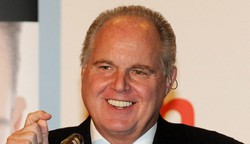Students in the United States borrowed a combined $1.67 trillion in federal and private student loan debt, according to the Federal Reserve’s most recent report. The total federal student loan debt is $1.54 trillion and the total private student loan debt is $131.81 billion.
Ken Michell, Ph.D., Chair of the Department of Political Science and Sociology, explained that the problem isn’t about where people went to college. “Let’s be clear, whether its $10k or $50k in student loan debt relief, neither option is progressive nor conservative nor solves the problem. I personally do not support student loan relief because it does not address the real problem – universities simply charge too much money in tuition. The USA is the only country in the world that ‘punishes’ its young people (and their families) who succeed in making it out of high school with good grades.”
Mitchell mentioned how other countries handle their education system. For example, in Canada, according to US News and World Report in 2018-2019, the average tuition ranges from a little more than $2000 to almost $7000 per academic year. In the US, that same year, in-state tuition averaged under $10,000 to $35,000 for a private institution education.
According to an opinion piece in The New York Times, public and private universities are beginning to use their tuition money on lavish amenities, that aren’t needed in higher education. Schools in Alabama, Iowa, Louisiana, and Missouri, to name a few have added lazy rivers to their campuses.
Robert Scott, Ph.D., Professor of the Department of Economics, Finance and Real Estate, explains that the demand to attend college has exponentially grown in the last three decades, which would mean more people borrowing money.
“Student loans are crazy because the interest rates charged are high—even given the risk. Also, student loans require people to start paying right after graduation even if they don’t have a job etc. And if their loans go into forbearance, they still accrue interest.” He suggests that there should be a more reasonable grace period for students to start repaying.
President Joe Biden announced during his first town hall that he would not be supporting a plan to forgive up to $50,000 in student loan debt on Tuesday, Feb 16. He responded to a member of the audience that he will “not make that happen,” despite having the support of several members of his party.
He continued, “It depends on whether or not you went to a private university or a public university. It depends on the idea that I say to a community that I am going to forgive the debt of billions of dollars of debt for people that have gone to Harvard, and Yale and Penn.”
This was met with major backlash, not only from members of the Democratic Party, but others alike. Within hours, “#CancelStudentDebt” was trending on Twitter, according to The Guardian.
Biden suggested that the money could be used towards early childhood education instead of the debt accumulated. Congresswoman Alexandria Ocasio-Cortez challenged this idea later that night, saying that the country could do both. On Twitter, she posted, “Nowhere does it say we must trade-off early childhood education for student loan forgiveness. We can have both.”
She also said, “Who cares what school someone went to? Entire generations of working-class kids were encouraged to go into more debt under the guise of elitism. This is wrong…We’ve got the *Senate Majority Leader* on board to forgive $50k. Biden’s holding back, but many of the arguments against it just don’t hold water on close inspection.”
According to CNN, over 60 lawmakers and 17 state attorneys’ generals have called on Biden to go further and cancel up to $50,000, including Sen. Elizabeth Warren and Senate Majority Leader Charles Schumer.
Another problem that arises from student loans is the racial and prejudice implications around it. Congresswomen Ayanna Pressley mentioned that she herself had to borrow to attend school, just like 85 percent of Black students and that she defaulted on those loans.
She continued, “We know that Black and Brown students are five times more likely to default than their white counter parts.”
A Demos report sampled from Experian’s entire credit database in December 2014, and found that out of 35,000 students debtors, Black students debtors “are 16 percent more likely to be in default of seriously delinquency than white” and that Latino borrowers are eight percent more likely to default.
Pressley wasn’t the only person in office to confess that they struggled with student loans. Former Georgia candidate Stacy Abrams mentioned that while running for governor, she was “$200,000 in debt,” some of which included student debt.
Senator Marco Rubio was reported to have $150,000 in student loan debt when he was elected to Florida legislation, according to the New York Times.
Natorye Miller, former communication student, said that students, no matter the institution, deserve some sort of relief. “There are a lot of people in debt because they took out these huge loans in order to attend these private institutions. We are not asking for much, although we could be asking for more.”
PHOTO COURTESY of Anthony DePrimo
IMAGE TAKEN from Kiplinger



